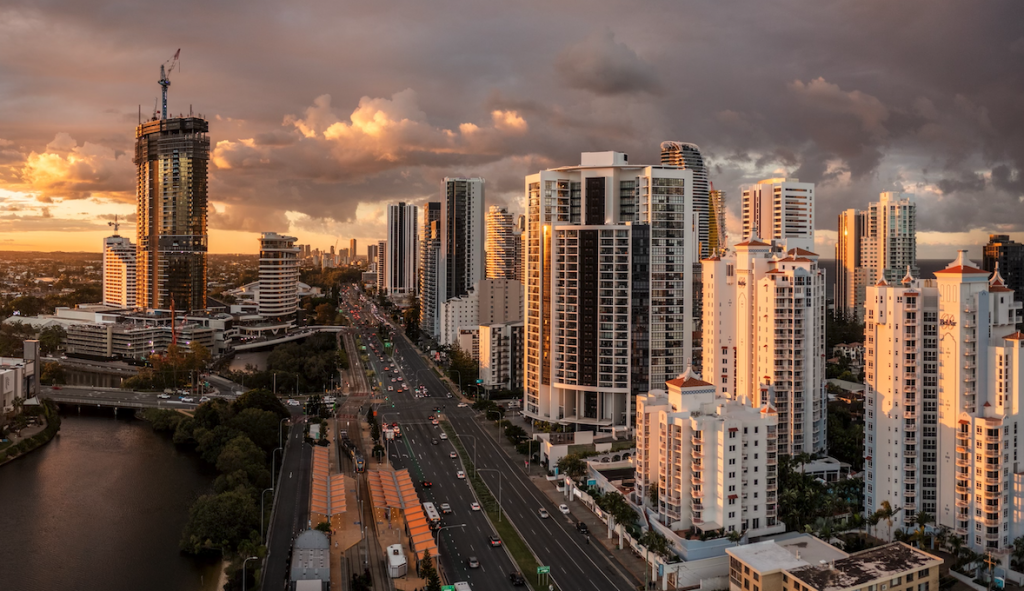How Will Commercial Property Recover From the Latest Series of Lockdowns?
August 18 2021

August 18 2021

The latest string of lockdowns from the Gold Coast to Byron Bay has positively and negatively impacted core commercial property assets and sectors overall. However, compared to Sydney and Melbourne, we’re fairing considerably better than the larger cities due to our retail, commercial and industrial precincts being both decentralised and spread out, allowing the majority of precincts to be well serviced by local traffic. We have also been fortunate to limited lockdown impacts in comparison to our major cities. The Gold Coast is also well supported by demand for functions, conferences and sporting events which will have a positive impact from interstate travel as the restrictions ease country wide.
Retail
Lockdowns have impacted businesses that occupy retail property, especially small businesses, and those with a heavier reliance on short-term cash flow. Retail property has been most impacted here, with hundreds of retail outlets closed intermittently and reliant only on online shopping, where possible.
According to Commonwealth Banks latest data on Commercial Property Observations, some stores have not re-opened. This has pushed retail vacancy rates up in areas of most significant impact, such as CBD’s and in the very largest shopping centres.
Small businesses which have a firm reliance on short-term cash flow have suffered the most from lockdowns, with hundreds of businesses closing intermittently and shifting focus to online shopping.
On the other hand, CBD retail has seen its speciality retail vacancy rate across Australia increase to 12.5 percent against a long-run average of 5.1 percent, impacting rent with Australian Prime CBD Retail rents decreasing 11 percent over the past year to June 2021.
In contrast, trading in supermarkets and large format retail (tenanted by companies such as JB Hi-Fi, Harvey Norman, Office Works etc.) have seen significant growth, and as a result, the property indicators have improved.
Industrial
The commercial industrial sector is doing well with the pandemic heightening the need for efficient supply-chains, driving more demand for warehouse space and pushing rents and values higher.
As the demand for e-commerce grows, so does the need for storage of the stock. So naturally, the industrial segment of commercial property for sale in Australia gained a big boost. The demand has not ceased even after the easing of restrictions as consumers now trust online shopping, and the big-box warehouses are getting all the attention from property buyers.
The industrial property sector is expected to reach $120 billion in the next four years across Australia. The surge will be brought about by the supply of modern and automated warehouses to meet the spiralling demand of e-commerce businesses and online retailers.
The pandemic has opened new avenues for e-commerce businesses and online retailers. With more consumers relying on this safe and secure shopping medium, industrial property for sale in Australia has witnessed a surge in demand. From this, we can conclude that the big box warehouses are here to stay for a long time.
Adam Grbcic from Kollosche Commercial commented, “We have received an unprecedented demand for industrial properties. Both tenanted and vacant properties for owner occupiers are highly sought-after in the current environment.”
“We have recently sold 12/1 Hornet Place in Burleigh Heads which was a tenanted industrial strata titled unit, with a five year lease and a net income of $75,000 + GST per annum. The sale price of $1,210,000 reflected a 6.19 percent net return.”
Office Space
The way we work has significantly changed for every type of business and employer during the pandemic, but the greatest shift has been the work-from-home phenomenon. In a survey conducted by KPMG, reporting suggests that since the COVID-19 shutdowns, 50 percent of companies think that over the next five years, the middle and back-office roles will be working remotely 51-80 percent of the time. Unsurprisingly, 73 percent are now accelerating their work from home strategies.
This has led to many commercial office spaces rethinking the type of office space with hybrid models. For example, spaces that combined remote working with some form of hub will be increasingly favoured over the next five years. A whopping 83 percent of all respondents surveyed said they would move to this model in the next two years.
Whatever the new office space will look like, it will lead to greater collaboration between landlords and tenants as businesses respond to changing employee expectations, economic pressures and a more volatile world.
According to Adam, this is a positive shift in the commercial office market. “It will encourage a repositioning of commercial office buildings. B and C Grade Buildings will use this opportunity to refurbish and innovate to attract tenants.”
Irrespective on the data and ‘work-from-home’ model, Adam believes the Gold Coast will not be as dramatic as other cities. “The Gold Coast, unlike major cities, does not have such a heavy reliance on public transport, access and car parking expenses. We believe that these are the major driver for the work-from-home culture. We are fortunate to have multiple commercial precincts spread out on the Gold Coast with convenient access and affordable parking (in comparison to other cities). Therefore we don’t believe the work from home culture will be heavily adopted and therefore our vacancy rates will not be as greatly impacted.”
If you would like to have an informed discussion around how to best leverage your commercial asset, get in touch with our Commercial sales, property management or leasing experts today.